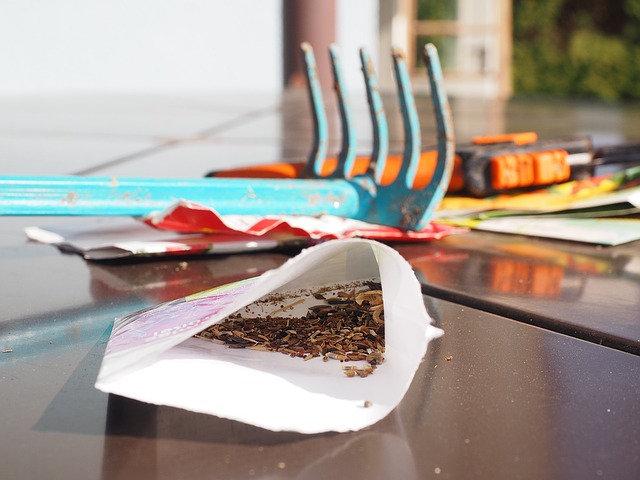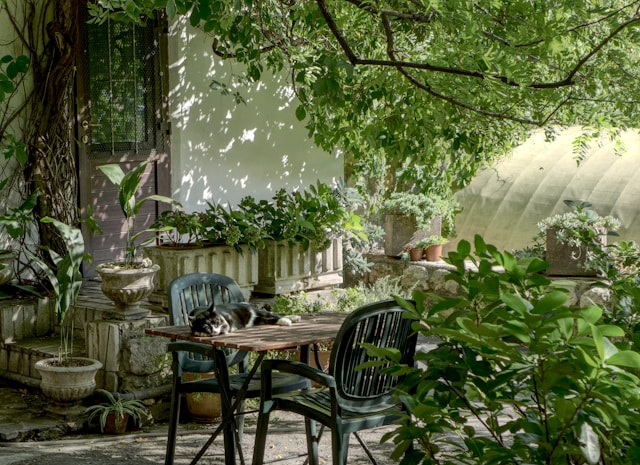I know that there is nothing more disappointing than sowing seeds and either nothing germinates or you have a few more empty spaces than you had planned. For me I’ve just wasted time, soil, a marker and a pot.
Although there are several different ways to test your seeds for viability, the quickest way is simply a float test. All you’re using is a cup and a little warm water. It doesn’t have to be a plastic cup, but the cup can be reused several times. You just want to make sure it is clear so that you can see what is going on. You might want to make sure if you use a glass container that it has been washed with soapy water and rinsed well.
The float test is not 100% full proof, but it sure comes close.
Basically all I am doing is counting out the amount of seeds I want to sow, plus a little extra. I mark the cup with a permanent marker so I remember what variety is in the cup. I do my float tests before I go to bed at night. I add a little warm water to the cup and sprinkle my seeds in it. By morning I will know that the seeds that sunk to the bottom of the cup are viable and the seeds that stayed floating on the top are not good.
The float test works well for seeds the size of tomatoes or peppers. If they are very tiny like perhaps carrots or lettuce seeds, they will want to float no matter what you do. So stick with the larger sized seeds and not the micro mini sizes.
The trick for sowing with teeny tiny seeds is simply to plant extra seeds and then thin the pots out.
I usually do a float test for seeds I’ve saved or traded for sowing directly into the garden as well. Especially for things like cucumbers and squash. Even melons and pumpkins get a float test for a better germination rate in the garden.
While many people do an alternative method of testing seed viability, like the whole damp paper towel or coffee filter thing that is placed in a ziploc plastic bag and labeled. For me personally, I find it much more time consuming. On top of the fact that it uses more materials to do the test that are really not reusable once the test is done.
So next, after taking all the floaters out and discarding them, I make sure that all of my pots are well watered in before planting the good seeds that sunk to the bottom of the cups.
A good rule of thumb when planting seeds is to generally go by the size of the seed. For something the size of a tomato seed you would not want to plant it in the soil deeper than say 1/4 of an inch.
I usually make a small indentation in each pot and place the seed in each one. Then I go back with a large pot of dirt I keep handy and sprinkle the dirt over the top of each seed. After that I press the top of each pot lightly to get a good connection of seed to soil. After I have them all planted and tagged, I water them in once more. Just be sure to keep the water gentle so as not to wash everything back out of the pot.
Your soil should be a good loose well draining mix of compost, garden soil, peat and even a little perlite if you can find it organic and without chemical fertilizers.
Once your seedlings have become large enough, you may need to move them into a larger pot until the weather permits them to go into the garden.
I always do this for tomatoes. Sometimes I transplant them a few times into bigger pots. Each time I transplant tomatoes I trim the bottom leaves off the plant and place the roots and stem down deeper into into the soil. The tomato will make new roots from the stem and make it a stronger plant with a deeper root system. This only works for things like tomatoes and Basil. For most every other vegetable plant I make sure the plant stays level with the soil line when transplanting.
We are really looking forward to spring! Try the Quickie Seed Viability Test and have a Happy Germination!!
- Wild Dagga Motherwort Medicinal Herb - November 11, 2013
- Grow The Best Organic Lettuce - November 4, 2013
- Amish Hot Pepper Mustard - October 23, 2013


Makes perfect sense. Gonna start doing this and remembering to mark the cups too!
Yep, marking the cups comes in handy for sure. Especially when you’ve got several things going on at one time 😉
Thanks for posting the link on our SSP page Pam! I’ve got quite a few seeds from trades that I’ll do this with – great time saver! You rock!
Does this float test work for bush beans?
Hi Beanie, I haven’t done the float test with bush beans. Usually you can tell their integrity by looking at them. If they look shriveled up I would toss them. Beans are a crop that I plant directly in the garden and I usually over plant them and thin them out. Happy Gardening!
Hi rednyr!! You are so very welcome. I just love all the people on SSP!! So glad you have enjoyed the article! Makes it all worthwhile xxoo
Great article! Great job Pamela! I tweeted this to my followers. I bet they’ll love reading it too.
Thanks So Much Be Self Sufficient!! I hope it helps save from having a few to many empty pots 😉 Happy Gardening!
Thanks for the tip but I love to use the small plastic jewelry bags. THIS allows me to hold them up to the light and see them better. It just makes it easy clean up for me 😀 Great Article! 🙂
to have infromation abt seed viability determination